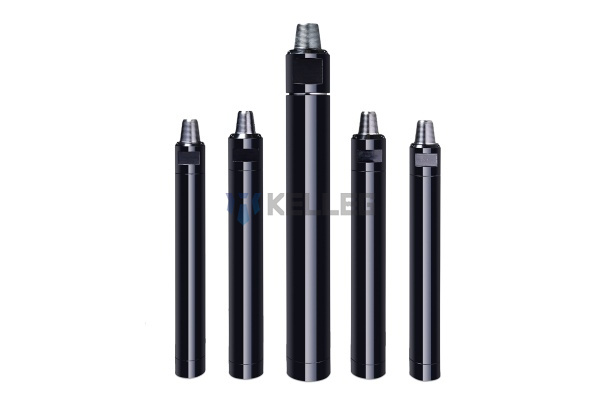2020 官网升级中!现在您访问官网的浏览器设备分辨率宽度低于1280px请使用高分辨率宽度访问。
In the fields of geotechnical engineering, mining, and geological exploration, DTH drilling technology has become an indispensable and vital construction method with its efficient and accurate drilling performance. This article will give you a detailed concept, principle, application field, and advantages of DTH drilling technology to help you fully understand it.
What is DTH drilling?

DTH drilling uses compressed air as the power and well-washing medium. It uses the energy of compressed air to convert wind energy into mechanical energy through a DTH hammer to achieve impact on the bottom of the hole. The rock at the bottom of the hole is fractured through impact rotation, with the primary method being impact, resulting in the rock breaking in volume. In air drilling, the air displacement is large, the bottom of the hole is clean, and repeated crushing is less.
Application fields of DTH drilling
DTH drilling has a wide range of applications, mainly including the following aspects:
Water well drilling: DTH drilling can be used for drilling groundwater wells, water supply systems, and water resource exploration.
Underground engineering: in underground engineering projects such as foundation engineering, hydropower stations, and tunnel construction, DTH drilling is used for drilling operations.
Geotechnical engineering: mountain-opening DTH drilling vehicles are used for geotechnical exploration, geotechnical sampling, and monitoring, which helps to understand the conditions of underground soil and rocks.
Mining work: DTH drilling technology is used in mining, exploration, and blasting work and can be used to drill blasting holes, rockfall holes, etc.
Working principle of DTH drilling
Energy transfer: the drill rig transfers energy to the DTH hammer through compressed air.
Impact and rotation: when the DTH hammer is powered by compressed air, it generates a high-frequency impact force that strikes the drill bit and transfers energy to the rock. Simultaneously, the drill rod rotates, causing the drill bit to turn within the rock.
Advantages of DTH drilling
DTH drilling has the following advantages over other drilling methods:
High efficiency: high drilling efficiency, especially in solid rock formations, the drilling speed can reach 2-5 times that of conventional drilling. Since the hammer is located directly above the drill bit, energy loss is minimal, ensuring that the drilling rate remains relatively consistent even as depth increases.
Low noise: low noise and vibration, suitable for use in cities and densely populated areas. Compared to other drilling methods, DTH drilling produces less noise and vibration, resulting in reduced environmental and social impact.
Low operating cost: the compressed air eliminates the need to purchase, transport, or treat drilling fluid and reduces the amount of drilling fluid and additives required. Additionally, since the impact force is provided by the impactor, the drill bit experiences less wear.
Wide applicability: DTH drilling technology applies to various geological conditions, such as sand, clay, and rock, and has a wide range of applicability.
Conclusion
As an efficient and safe construction method, DTH drilling plays a crucial role in engineering fields such as geological exploration, mining, and tunnel construction. Understanding and mastering the principles and application areas of DTH drilling technology is of great significance to improving engineering quality and efficiency. If you need to use DTH drilling technology in your construction project, you might as well choose a professional construction team and advanced equipment to ensure the smooth progress of the project.